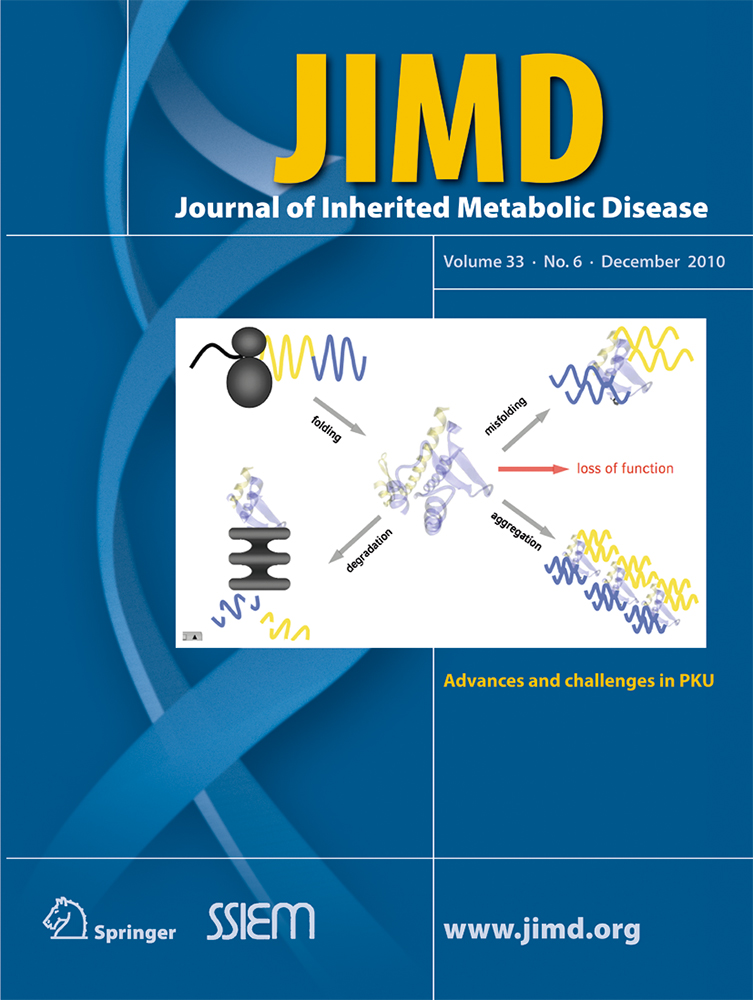Progressive ataxia and myoclonic epilepsy in a patient with a homozygous mutation in the FOLR1 gene
Communicated by: Nenad Blau
Competing interest: None declared.
Electronic Supplementary Material:
The online version of this article (doi:10.1007/s10545-010-9196-1) contains supplementary material, which is available to authorized users.
Abstract
Several unrelated disorders can lead to 5-methyltetrahydrofolate (5MTHF) depletion in the cerobrospinal fluid (CSF), including primary genetic disorders in folate-related pathways or those causing defective transport across the blood-CSF barrier. We report a case of cerebral folate transport deficiency due to a novel homozygous mutation in the FOLR1 gene, in an effort to clarify phenotype–genotype correlation in this newly identified neurometabolic disorder. A previously healthy infant developed an ataxic syndrome in the second year of life, followed by choreic movements and progressive myoclonic epilepsy. At the age of 26 months, we analyzed CSF 5MTHF by HPLC with fluorescence detection and conducted magnetic resonance (MR) imaging and spectroscopy studies. Finally, we performed mutational screening in the coding region of the FOLR1 gene. MR showed a diffuse abnormal signal of the cerebral white matter, cerebellar atrophy and a reduced peak of choline in spectroscopy. A profound deficiency of CSF 5MTHF (2 nmol/L; NV 48-127) with reduced CSF/plasma folate ratio (0.4; NV 1.5-3.5) was highly suggestive of defective brain folate-specific transport across the blood-CSF/brain barrier. Mutation screening of FOLR1 revealed a new homozygous missense mutation (p.Cys105Arg) that is predicted to abolish a disulfide bond, probably necessary for the correct folding of the protein. Both parents were heterozygous carriers of the same variant. Mutation screening in the FOLR1 gene is advisable in children with profound 5MTHF deficiency and decreased CSF/serum folate ratio. Progressive ataxia and myoclonic epilepsy, together with impaired brain myelination, are clinical hallmarks of the disease.




